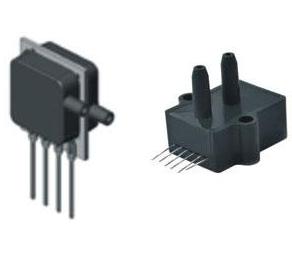
The national standard GB7665-87 defines a sensor as: "A device or device that can sense a specified part to be measured and convert it into a usable signal according to a certain rule, usually consisting of a sensitive element and a conversion element."
1. Classification of sensors
According to the input physical quantity can be divided into: displacement sensor, pressure sensor, speed sensor, temperature sensor and gas sensor.
According to the working principle can be divided into: resistive, inductive, capacitive and potential type. Third, according to the nature of the output signal can be divided into: analog sensors and digital sensors. That is, the analog sensor outputs an analog signal, and the digital sensor outputs a digital signal. Fourth, according to the principle of energy conversion can be divided into: active sensors and passive sensors. Active sensors convert non-electrical energy into electrical energy, such as electromotive force, charge-type sensors, etc. Passive-program sensors do not function as energy converters, but simply convert measured non-electrical energy into electrical parameters such as resistive, inductive, and capacitive. Radiance sensor and so on.
The technical content is high. There are many indicators for the sensor, the most important of which is the resolution of the detected object. Some sensors are expensive because they can detect things that other sensors cannot detect.
2. Future market for sensors
The downstream applications of the sensor manufacturing industry include industrial inspection, automotive, medical, environmental protection, and aerospace. Due to the force of the downstream market in the sensor manufacturing industry, the prospects for the sensor manufacturing industry in China can be expected. In recent years, the development of the Internet of Things technology has been put on the agenda, and it has also brought new opportunities to the traditional home appliance industry. The home appliance Internet of Things will be a development trend of the home appliance industry in the future. Sensors are the main source of information for household appliances, and they play a crucial role in the intellectualization level of home appliances. The use of sensors to improve product performance is the focus of smart home appliance technology development in recent years. Sensor technology is the core technology of the Internet of Things. The development of home appliances Internet of Things will inevitably drive the large-scale application of related sensor technologies. The development prospect of sensors in home appliances is promising.
1, The Wall-Mounted Infrared Thermometer AT100 accurately measures a person`s body temperature in 1 second. A reading distance is 1-10cm, equipped with a clear LCD Digital Display.
2, Switching Between ℃ and ℉
3, AT100 infrared forehead thermometer, no need to hold Wall Mounted Installation
4, Infrared technology, 45s no operation, enters the standby mode; wake up when people approach
5, Fever Beeper
6, For Offices Shops Schools
Smart Infrared Thermometer,Infrared Thermometer No Touch,Wall-Mounted Non-Contact Digital Temperature Thermometer
Axiswell Technology Co., Ltd , https://www.medhealthycare.com